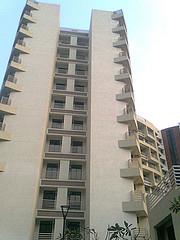Industry experts foresee a significant increase in demand for mid-segment housing throughout the current year. Notably, nearly 50% of the overall demand derives from this particular segment.

Mid-segment housing is increasingly recognized as a pressing need in the sector.
While conversations often center around both affordable and high-end housing segments, the mid-income housing category frequently remains overlooked, despite its steady growth this year. According to Ajay Mangal, director and CEO of MG Housing Pvt. Ltd, much of India's population belongs to the mid-income bracket, suggesting the potential for mid-segment housing to flourish in the near term.
Mr. Mangal expressed optimism, stating, "I expect the mid-segment housing demand to escalate this year," highlighting that even in Delhi, the national capital, conditions are expected to mirror this trend.

In his assessment of the National Capital Region (NCR), he pointed out that areas such as Faridabad, Ghaziabad, and certain parts of Greater Noida will play pivotal roles in stimulating mid-segment housing demand. While cities like Gurgaon and Noida are yet to reach tier I status, they will experience limited interest in mid-income properties.
Mr. Mangal also raised concerns about the escalating property prices in these areas, which have surpassed what the mid-income group can manage. In contrast, property prices in Ghaziabad and Faridabad remain more accessible to this demographic.
Further emphasizing the needs of this market, Mr. Mangal noted a growing preference for 2 BHK apartments within the NCR. He argued that these smaller units should be categorized under mid-segment housing, contrasting with the common misconception that they belong to the higher-end segment, which typically encompasses 3, 4, or even 5 BHK apartments.
Developers are now focusing on creating projects aimed at mid-income households, offering affordable 2 BHK apartments to prospective buyers. Builders concentrate on these smaller units partly due to practical considerations, as this strategy allows them to better manage rising land costs by increasing the number of available housing units. In fact, it is projected that about half of the total housing demand is attributed to the mid-segment market.